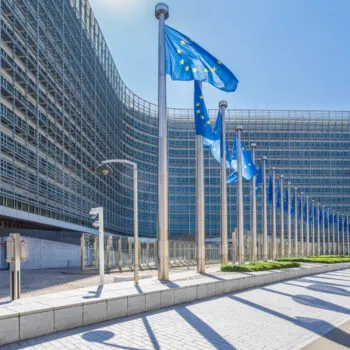The European Commission has released its updated EU Industrial Strategy. It provides a welcome narrative on the competitive advantage from EU industry transitioning to climate neutrality but fails to put in place the concrete actions needed to deliver that shift.
EU industrial strategy – A strong opportunity narrative
In past industrial strategies, climate ambition was often set against the need to take competitiveness into account.
The updated EU industrial strategy, by contrast, strongly communicates the competitive advantage for Europe going all out for climate-neutrality. It articulates a clear business case for the shift to a more digital, zero–pollution, climate-neutral EU industry and offers evidence of first-mover advantages to businesses that have embraced this transition.
Mixed signals and significant gaps in implementation
However, the updated EU industrial strategy fails to highlight concrete steps for industry to take advantage of these opportunities. It sends mixed signals about the Commission’s commitment to put in place real incentives for the sector to deeply decarbonise.
On carbon border adjustment mechanisms (CBAMs), for example, the updated strategy indicates a shift in framing. Previously the Commission had explicitly said that CBAMs would come at the cost of free allocation. The updated EU industrial strategy notes that existing tools to address the risks of carbon leakage “should continue to be used until fully effective alternative arrangements are inplace.” Concerted industry lobbying against any move to limit free allowances seems to have won out. This will dampen the environmental impact a CBAM might have had and will increase international opposition to what was already a very contentious EU proposal.
Transition pathways from EU industrial strategy
One key action from the strategy will be the co-creation by policymakers and the private sector of green and digital transition pathways for industrial ecosystems, starting with energy-intensive industries. The preparation of sectoral roadmaps has been a precursor to more comprehensive industrial decarbonisation policies in both Sweden and the Netherlands and could play a powerful role at EU level. It is clearly imperative to ensure industrial stakeholders, who will have to implement the pathways set out, are properly involved in their creation.
But co-creation also involves risks. We have had plenty of industrial roadmaps drawn up by industry associations with little decarbonisation action to show for it. The success of such a process will rely on a strong governance framework ensuring transparency around how these pathways are drawn up and holding participants to account to deliver targets. This is currently missing.
Missing half the industry transition picture
There is, concerningly, only one lonely sentence on circular economy, citing “continued efforts” in this area, and the update completely neglects the need for large-scale reductions in material consumption. Deploying circular economy levers to reduce how much steel, cement and plastic we need in the first instance will be essential if EU industries are to reach climate neutrality. The missing link between demand-side efforts and decarbonisation is evident in the choice of ecosystems set out in the update with energy-intensive industries separated from their end-use sectors (mobility and construction).
EU stepping up as a global green market shaper?
The updated EU industrial strategy has a welcome focus on the EU’s standard-setting power, highlighting a forthcoming strategy on standardisation. Deploying standards is one tool the EU has at its disposal to improve its competitiveness. It is unlikely that the EU will outcompete the US and China in spending on clean technology sectors and the EU will inevitably continue to buy some technology from abroad. Likewise, it is doubtful that a CBAM will fully protect the EU steel sector from Chinese steel producers with access to state subsidies aimed at decarbonising production processes. But Europe has valuable assets in the form of its single market and regulatory framework, through which it can drive a green and inclusive transition in global supply chains.
An EU industrial strategy born into a difficult political context
Commission policymakers did not want to pre-empt upcoming legislation but, as a result, the strategy was left short of substance. Specific policies are name-checked, notably a pilot scheme for carbon contracts for difference, which could be significant, but no major new initiatives. This begs the question – why publish a updated industrial strategy now, when they cannot say more about the concrete policies required for industry transition?
There is also a mismatch in European ambitions and competencies in the area of industrial policy. Most competencies sit at the member state level and EU countries are deeply divided on the future direction of industrial policy. France and Germany have been pushing a more interventionist approach, but smaller Member States have pushed back, cautious to avoid further fragmentation in the single market. It will continue to be difficult for the Commission to articulate a strong EU industrial strategy as long as this ideological cleavage has not been resolved.
Key political choices lie ahead
We are heading into a busy legislative year where many of the concrete policies needed for industrial transition could become a reality. The revision of the EU Emissions Trading System gives the Commission a chance to ensure industries face a stronger carbon price signal and benefit from more targeted support to transition. The upcoming Sustainable Products Initiative, green public procurement rules and other standards will also be vital in creating lead markets for green industrial products.
The Commission has some fundamental choices to make. Will it continue to protect European industry in the face of external competition, or will it put in place the pieces needed to transform industry in the shift to a climate-neutral economy?


